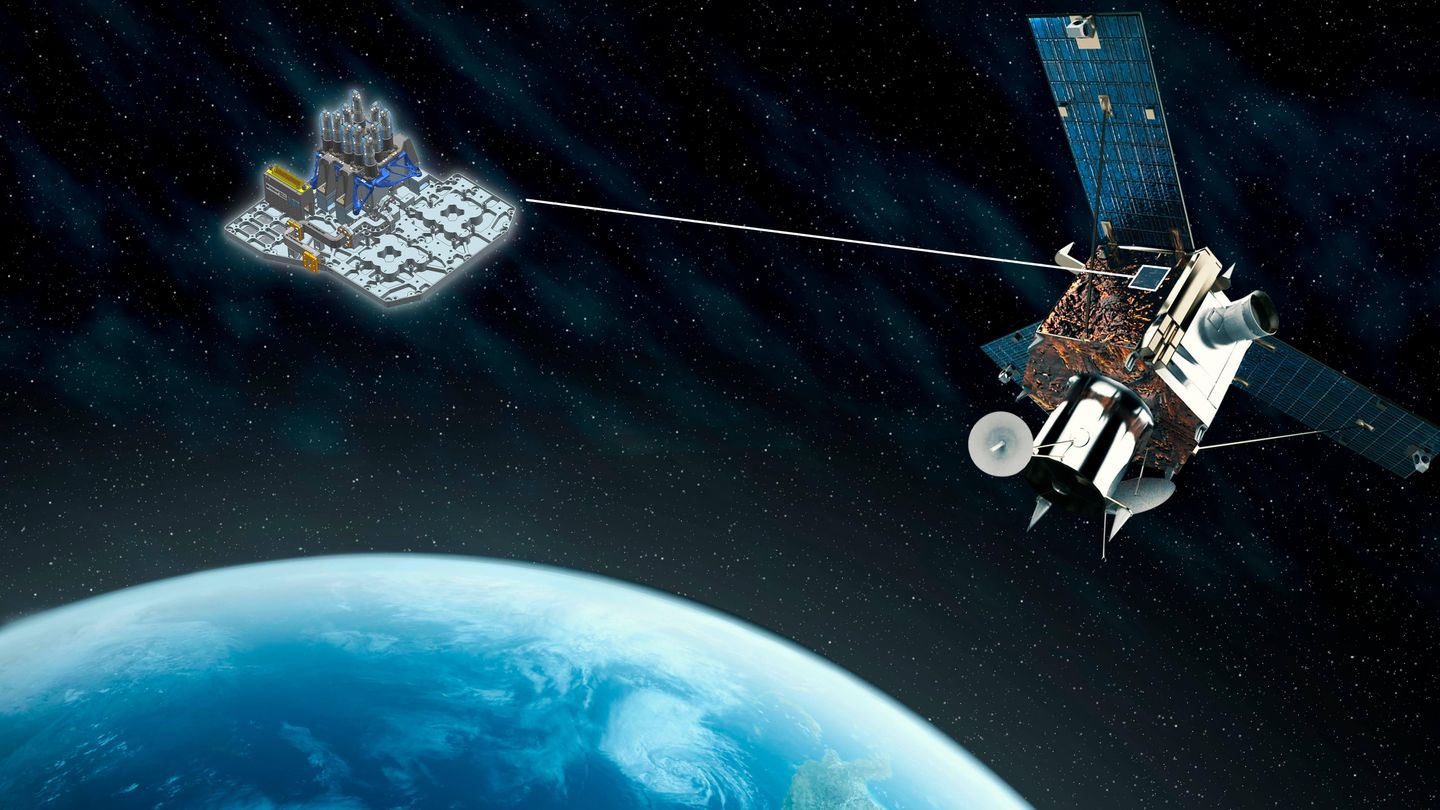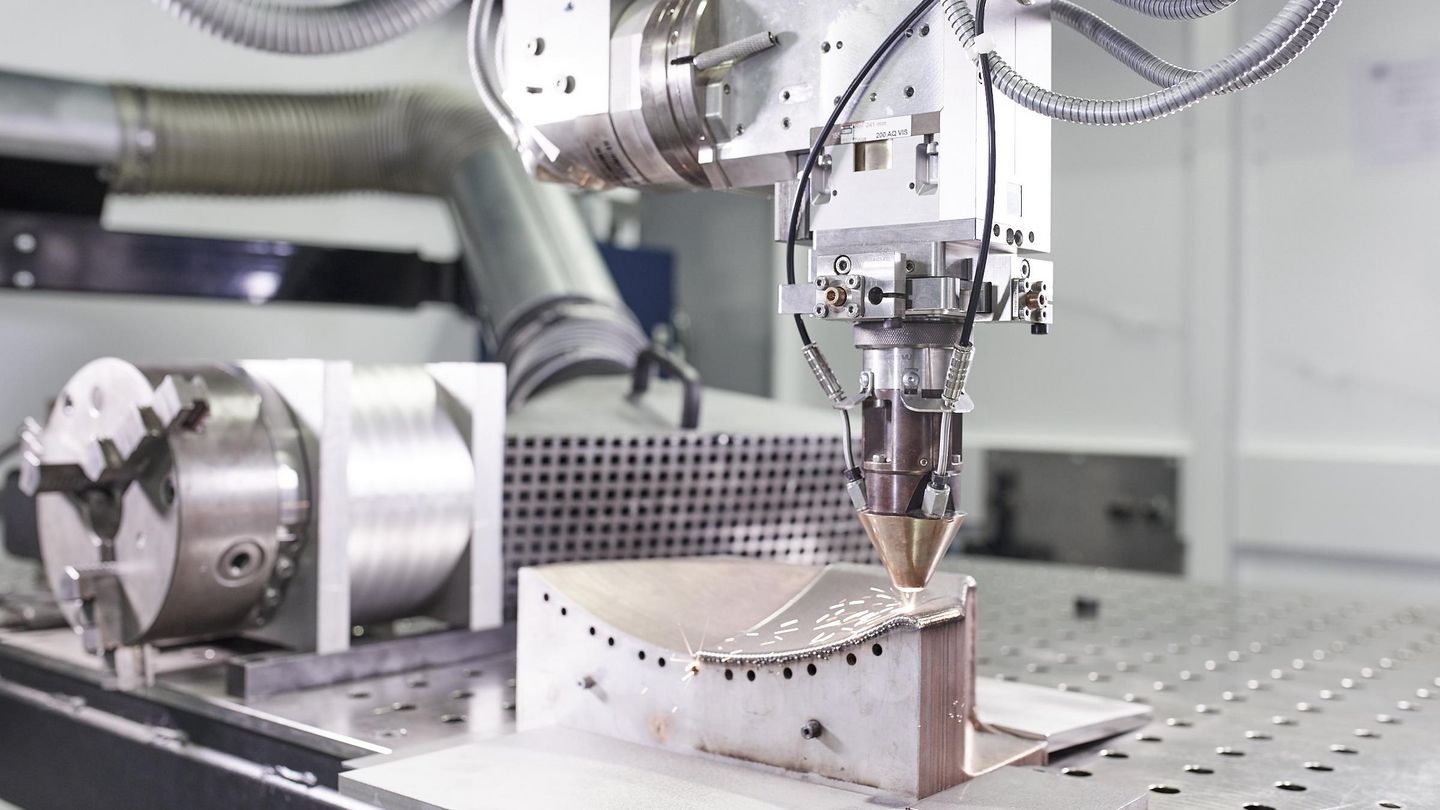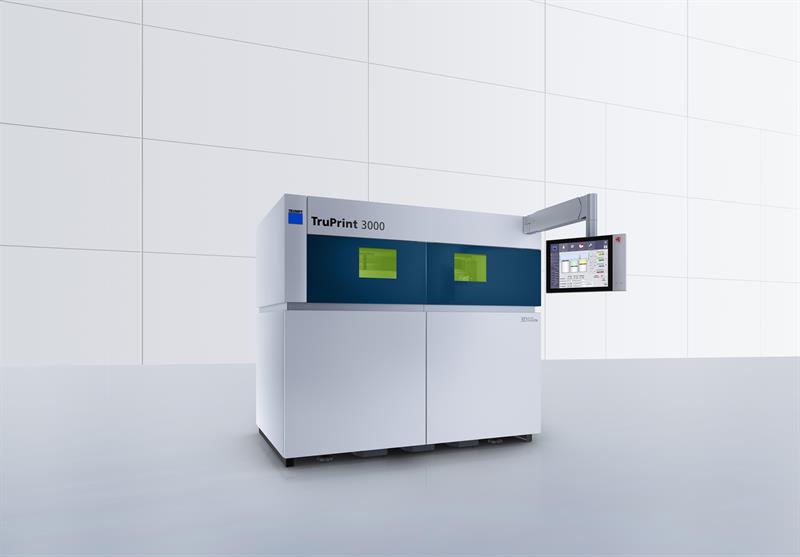German machine tool manufacturer TRUMPF is demonstrating the applications of additive manufacturing for satellites and aircraft at the 2019 International Paris Air Show.
With the company’s expertise in Laser Metal Fusion (LMF) and Laser Metal Deposition (LMD) technology, weight reduction, cost efficiency, and part optimization are presented for the aerospace industry. Thomas Fehn, General Manager Sales, Market & Finance for TRUMPF additive manufacturing, said:
“With a market share of over 20%, the aerospace sector is one of the world’s most important industrial users of additive manufacturing. We are steadily expanding our market share and helping to establish the process as a key technology.”

Aerospace and additive manufacturing
According to TRUMPF, LMF technology is suitable for creating complex parts for engines, combustion chambers, and specialist aerospace components. This process builds up a part layer by layer from a powder bed. On the other hand, LMD uses a laser beam to build up layers on the surface of a part with metal powder being extruded through a nozzle.
This process can be used to rapidly generate very large parts for prototype development and repairs to large parts including gas turbines and compressor blades. Fehn added, “Thanks to our LMD and LMF capabilities, we are perfectly placed to offer our aerospace customers 3D printing solutions that match their needs.”

A lightweight satellite
Among TRUMPF’s use cases is a 3D printed mounting structure commissioned by German Aerospace company TESAT for the Heinrich Hertz communications satellite. This mounting structure integrates strap-on motors which modulate microwave filters.
With collaboration from AMendate, TRUMPF engineers optimized the topology of the mounting structure and reduced its weight from 164 grams to 75 grams. Furthermore, the improved structure, which has also been proven to be more robust, was manufactured on the TruPrint 3000 3D printer.
“This is just one example of how we can use additive processes in satellite construction to reduce weight and increase payload capacity,” said Matthias Müller, industry manager additive manufacturing for aerospace and energy at TRUMPF.

Cost-effective 3D printing for aviation
In the aviation sector, TRUMPF is showcasing a use case which involves collaboration from Spanish supplier Ramem. Additive manufacturing was adopted to optimize a part known as a “rake” which is used during engine development to measure pressure and temperature.
TRUMPF produced an optimized rake geometry using the TruPrint 1000 3D printer. This redesigned part decreases the amount of material used from the original by an estimated 80%, which reduced its overall cost by 74%. “This result shows that 3D printing can save a significant amount of time, material and money in the aircraft industry,” explained Julia Moll, project manager from TRUMPF Additive Manufacturing.
Finally, TRUMPF is presenting sample applications of LMD technology including the repair of a high-pressure compressor blade used in aircraft engines known as a 3D aeroblade. With LMD, sections of the blades were able to 3D printed 0.2 millimeters thick.
Oliver Müllerschön, head of industry management laser production technologies at TRUMPF added, “Laser metal deposition delivers a low dose of energy – and that makes it perfect for aerospace applications. We can use it not only to repair and coat parts but also to build up three-dimensional structures. That’s simply not possible with conventional welding methods.”
The International Paris Air Show concludes on the 23rd of June, 2019.
For the latest additive manufacturing news subscribe to the 3D Printing Industry newsletter and follow us on Twitter and Facebook.
Looking for a career in additive manufacturing? Visit 3D Printing Jobs for a selection of roles in the industry.
Featured image shows TRUMPF 3D printed a mounting structure for the microwave filter in Germany’s Heinrich Hertz communications satellite, reducing its weight by 55%. Image via OHB System AG/TRUMPF.


